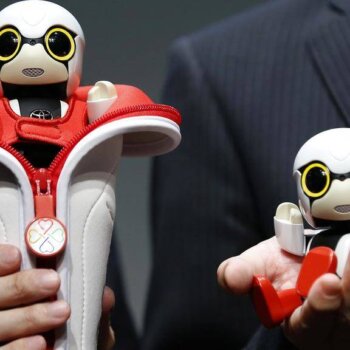SINCE the dawn of commercialism, marketers have been trying to influence customers to choose their products or services. The challenge is that a customer’s decision making process is based on a vast number of factors. It is virtually impossible to influence them all. The smart marketer usually aims to establish a balance by appealing to the emotional as well as the rational side.
If you’re interested in the field of psychology and the role it plays in marketing, consider reading Influence: The Psychology of Persuasion by Dr. Robert B. Cialdini. With more than two million copies sold and available in 26 languages, the book was named one of the ‘Smartest Business Books ‘by Fortune Magazine. Often on the required reading list of marketing students, the book has been on the New York Times Business Best Seller List. The reason for the book’s phenomenal success is the concept of the six pillars. These pillars govern our social behaviors. So whether you eat noodles with a fork and call it spaghetti, or like your noodles in a soup bowl and call it ramen, the concept works across multiple cultural terrains.
Pillar One: Reciprocity
A common application of reciprocity is when brands give away free product samples. From the consumer’s point of view, they are assessing how much they like the product. At the same time, the invisible social force of reciprocity is taking place. In the subconscious mind, the free sample is a form of favor. Naturally, the recipient wants to reciprocate and return the favor by purchasing the actual product.
In our interconnected world today, engagement and great customer service worksin the same way. Many companies give away white papers, research reports, free prizes, and tips to solve problems. These types of actions often set reciprocity into motion.
Pillar Two: Commitment and Consistency
Most of us want to be seen as “walking the talk,” essentially being consistent with our beliefs and actions. When we promise to do something, verbally or in writing, we are likely to follow through. Some sales people use this to their advantage and add extras after the sales process has been completed. They know that many customers will not cancel the order despite the changes. A subscription-based opt-in that requires the user to register on a website is a way to leverage commitment and consistency. Free trials are an effective way to get users to commit to your product for a certain period of time. Once the period is up, the customer feels obliged to pay to continue.
Pillar Three: Social Proof
Cialdini, the prominent social psychologist, says that human beings regularly make choices about what to do and think based on the ideas and actions of others. Simply put: We like to follow the group. This is called social proof.
In the past, all a company had to do was to show models and actors using their products to establish social proof. Nowadays, consumers are less susceptible to pandering. With the growing usage of social media, brands are now expected to step up and provide a unique customer experience and engagement. The ultimate goal is to gain brand evangelists. These advocates or fans will freely tell their network of family, friends and the world how much they just love the product.
Pillar Four: Authority
Socially, most of us have been conditioned to trust and follow the instruction of an authoritative figure. Marketers have put this to use by using CEOs and other trusted authority figures as the spokesperson for the brand. Endorsements from men and women perceived to be experts in their fields often have a greater impact than any sales slogan and it also adds more depth.
There are authority figures in nearly every field. The key is to find the ones that matter to your brand and seek their sponsorship or review. If you sell an energy saving product, a positive testimonial from a prominent green association creates the authority effect.
Pillar Five: Liking
It’s no surprise to know that people emulate those they look up to and like. Many fans buy products simply because their favourite celebrity uses them. Behind every commercial featuring Choompoo Areeya or Aum Patcharapa telling you to buy a particular product, there is a savvy marketer. However, not all brands canvass fans adoration in the same way. Some leverage it via product placement and social media. Consider getting connected with the social celebrities and icons of your industry. Find who your target market follows and pursue their social sponsorship. The effect of reaching your audience in this way can be staggering.
Pillar Six: Scarcity
Have you ever seen a banner advert saying “last condo unit for sale at a special price”? Perhaps you have seen, in a newspaper or a friend’s Facebook, a photo of a shop with a massive queue. Perceived shortage of something almost always generates demand. This is the reason why mega sales only happen over a weekend, coupons have expiration dates, and websites put a countdown on their discounted offers.
You don’t need to go as far as having a countdown clock on your website to create the scarcity effect. For your next event, let the potential customers know that seats are limited and only a few would be available within a short time frame. Those who are sitting on the fence will spring into action and book their ticket!





























